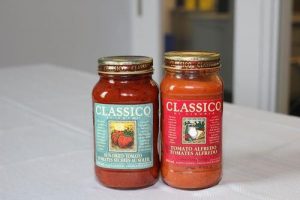

Have you ever bought a tub of yogurt or a bag of potato chips only to find that it was three-quarters full when you opened it? Have you ever noticed that your favorite product is now sold in a smaller container, while the price remains the same? If so, you've discovered the effects of undersizing!
But what is undersizing?
This is a process whereby a manufacturer reduces the quantity of a product in such a way that the consumer cannot see it, without changing the price.
The manufacturer can do this in different ways. He can reduce the quantity in the container while keeping the same selling price. For example, for the same price, he can put 950 ml instead of 1 liter in his juice bottle, or sell a box containing 5 candy bars instead of 6.
The manufacturer can also change the product's packaging to make it smaller, and these changes will be almost imperceptible, even to discerning consumers! For example, a jar of sauce has been changed to a more elongated shape. This new format looks bigger, but it no longer contains 700 ml, but rather 650 ml.
(Fig. 1: Classico 700 ml vs Classico 650 ml tomato sauce)
(At first glance, these two containers may appear to contain the same amount of sauce. However, the container on the left contains more sauce than the one on the right, which has been lengthened...)
How do you choose your products?
At present, there are no legal provisions specific to undersized products. Instead, there are laws requiring manufacturers and retailers to list a range of relevant information to help consumers make an informed choice.
In short, with this information and the tips below, you can limit the effects of undersizing on your daily life and get more for your money:
- Pay attention to the display per unit of measurement. You'll quickly find out which product is the least expensive for the quantity offered. For example, for two identical boxes of cereal, the price per unit of measure differs: $0.25 per 100 g or $0.30 per 100 g. In this case, the first option is cheaper. In this case, the first option is more advantageous.
- Avoid smaller or half-empty containers by buying in bulk. In fact, many stores offer products in bulk at lower prices.
- In the aisles, choose the products at the top or bottom, which are generally cheaper for a similar quantity.
- It's best to buy family sizes, as you can always freeze any surplus.







